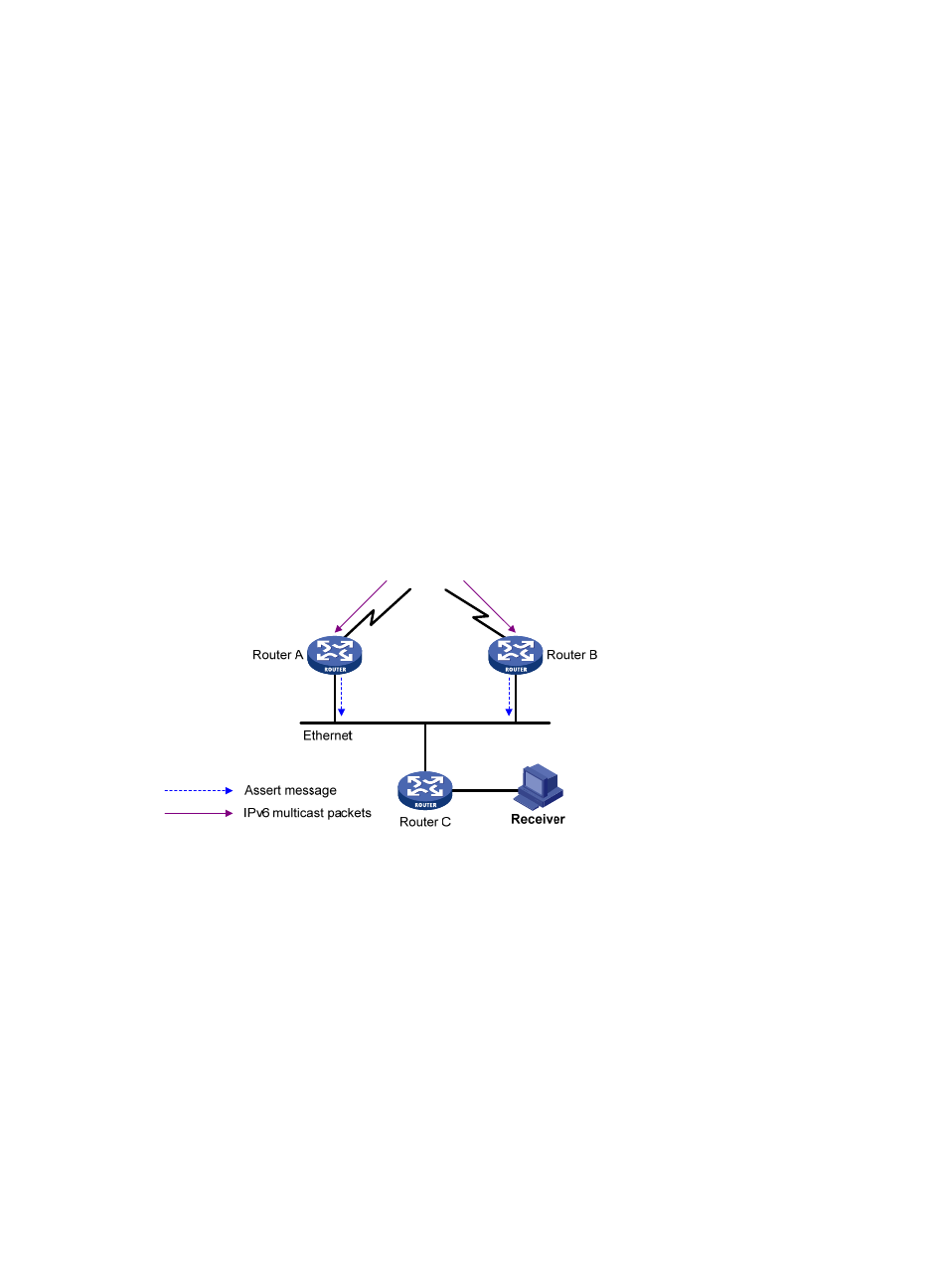Graft, Assert, Enabling mld snooping – H3C Technologies H3C S12500-X Series Switches User Manual
Page 157

147
The pruned state of a branch has a finite holdtime timer. When the timer expires, IPv6 multicast data is
again forwarded to the pruned branch. The flood-and-prune cycle takes place periodically to maintain
the forwarding branches.
Graft
To reduce the join latency when a new receiver on a previously pruned branch joins an IPv6 multicast
group, IPv6 PIM-DM uses a graft mechanism to turn the pruned branch into a forwarding branch, as
follows:
1.
The node that needs to receive the IPv6 multicast data sends a graft message to its upstream node,
telling it to rejoin the SPT.
2.
After receiving this graft message, the upstream node adds the interface that received the graft
message into the outgoing interface list of the (S, G) entry for the IPv6 multicast group, and then
sends a graft-ack message to the graft sender.
3.
If the node that sent a graft message does not receive a graft-ack message from its upstream node,
it continues to send graft messages at a configurable interval until it receives an acknowledgment
from its upstream node.
Assert
On a subnet with more than one multicast router, the assert mechanism shuts off duplicate multicast flows
to the network. It does this by electing a unique multicast forwarder for the subnet.
Figure 45 Assert mechanism
As shown in
, after Router A and Router B receive an (S, G) packet from the upstream node, they
both forward the packet to the local subnet. As a result, the downstream node Router C receives two
identical multicast packets, and both Router A and Router B, on their own downstream interfaces, receive
a duplicate packet forwarded by the other. After detecting this condition, both routers send an assert
message to all IPv6 PIM routers on the local subnet through the interface that received the packet. The
assert message contains the IPv6 multicast source address (S), the IPv6 multicast group address (G), and
the preference and metric of the IPv6 unicast route to the IPv6 multicast source. By comparing these
parameters, either Router A or Router B becomes the unique forwarder of the subsequent (S, G) packets
on the subnet. The comparison process is as follows:
1.
The router with a higher preference to the IPv6 multicast source wins.
2.
If both routers have the same preference to the IPv6 multicast source, the router with a smaller
metric to the IPv6 multicast source wins.
3.
If a tie exists in route metric to the IPv6 multicast source, the router with a higher IPv6 link-local
address on the downstream interface wins.
- H3C S9800 Series Switches H3C S5560 Series Switches H3C S5130 Series Switches H3C S5120 Series Switches H3C S12500 Series Switches H3C SR8800 H3C SR6600-X H3C SR6600 H3C WX6000 Series Access Controllers H3C WX5000 Series Access Controllers H3C WX3000 Series Unified Switches H3C LSWM1WCM10 Access Controller Module H3C LSWM1WCM20 Access Controller Module H3C LSQM1WCMB0 Access Controller Module H3C LSRM1WCM2A1 Access Controller Module H3C LSBM1WCM2A0 Access Controller Module
